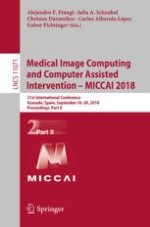2018 | OriginalPaper | Chapter
Vascular Network Organization via Hough Transform (VaNgOGH): A Novel Radiomic Biomarker for Diagnosis and Treatment Response
Authors : Nathaniel Braman, Prateek Prasanna, Mehdi Alilou, Niha Beig, Anant Madabhushi
Published in: Medical Image Computing and Computer Assisted Intervention – MICCAI 2018
Publisher: Springer International Publishing
Activate our intelligent search to find suitable subject content or patents.
Select sections of text to find matching patents with Artificial Intelligence. powered by
Select sections of text to find additional relevant content using AI-assisted search. powered by
